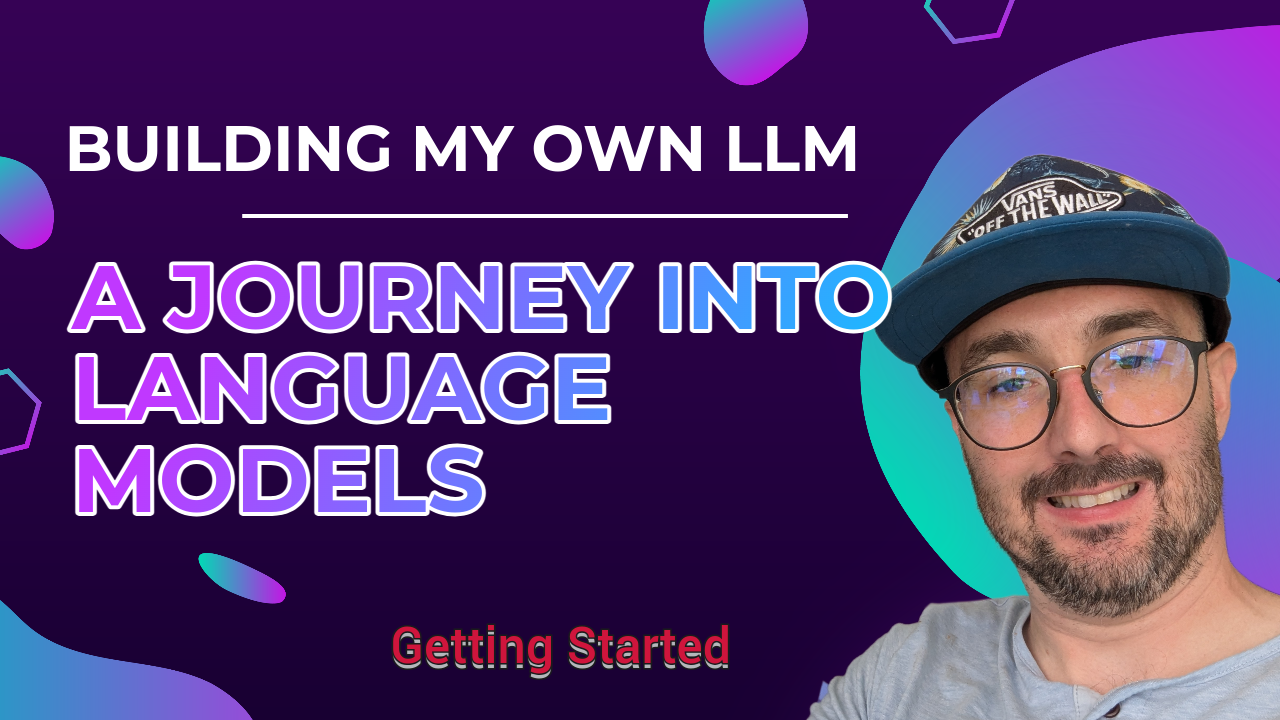Building My Own LLM: A Journey into Language Models 🛠️
 Jason
Jason
Welcome to Cloud Dude's page! In this series, we will be building Large Language Models (LLMs) following the book "Build a Large Language Model from Scratch" by Sebastian Raschka, available at Manning.com.
Introduction
Large Language Models (LLMs), like ChatGPT, are powerful text generation and problem-solving tools. Building your own LLM ensures data privacy and control, allowing you to tailor the model to your specific needs and datasets. In this post, I will guide you through setting up the development environment required to follow along with the book.
Setup
1. Clone the Repository
First, clone the repository from Rashbits GitHub to follow along with the book. This repository contains all the code and resources you will need.
2. Install Miniforge
Miniforge is essential for installing the dependencies needed for our LLM. Use the following commands to install Miniforge:
curl -L -O "https://github.com/conda-forge/miniforge/releases/latest/download/Miniforge3-$(uname)-$(uname -m).sh"
bash Miniforge3-$(uname)-$(uname -m).sh
This command downloads and installs Miniforge, setting up the underpinnings for your LLM.
3. Create a Virtual Environment
Using Conda, create a virtual environment for Python. This is crucial for ensuring that Python runs correctly and that dependencies do not conflict with other projects on your machine.
conda create -n llm_env python=3.8
conda activate llm_env
4. Install Required Libraries
To get the code from the book to work and to use the right libraries, you need to install JupyterLab and watermark:
conda install jupyterlab watermark
5. Run Environment Check Script
To ensure your environment matches the one used in the book, run Sebastian Raschka's setup script:
python /LLMs-from-scratch/setup/02_installing-python-libraries/python_environment_check.py
This script will tell you what is missing in your environment.
6. Install Additional Dependencies
To fix any missing dependencies and align your environment with the book, run:
pip install -r /LLMs-from-scratch/requirements.txt --upgrade
This command installs all the required Python libraries listed in the requirements.txt file, ensuring that your environment is fully set up.
A Small Overview Of The Book So Far
Chapter 1: Introduces the theory behind LLMs and explains how they work.
Chapter 2: Delves into the practical implementation of creating your own LLM. I am going to write a future Blog Post about this.
The ultimate goal of the book and my blog posts is for you to have your own LLM running on your machine, trained on datasets of your choice. For example, you could train it on code to create a programming assistant.
Conclusion
Stay tuned for upcoming videos in this series, which aim to guide you through building and using your own LLM. Follow along with the book for a comprehensive learning experience. Happy coding!
I would highly recommend buying this book; you can get it from here: https://www.manning.com/books/build-a-large-language-model-from-scratch
And I look forward to you following along with me as we explore how to do this together over the next few weeks or months...
As I said on my YouTube Channel (https://www.youtube.com/@TheCloudDude-24), I will eventually convert this LLM into a GoLang version just because I believe it will run better. I will also cover that as a new series after this one.
Happy coding,
Cloud Dude
Subscribe to my newsletter
Read articles from Jason directly inside your inbox. Subscribe to the newsletter, and don't miss out.
Written by

Jason
Jason
I am a cloud engineer, and I specialise in writing Go and Python to interact with the various cloud SDKs in AWS and Azure. Some GCP and Hetzner